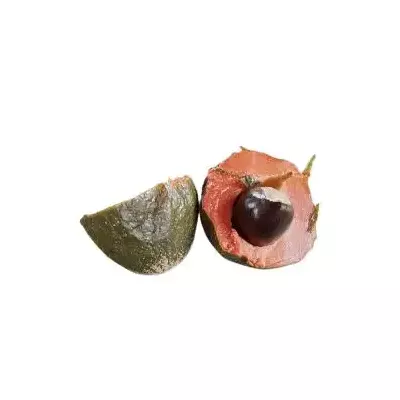



Green sapote is a slow-growing tropical fruit tree with sweet and creamy fruit. Enjoy this sapote variety, which is an altogether different avatar from our regular sapota. It is not just bigger in size than our chikoo but also high on taste and nutrition.

Pay using UPI, Card or Netbanking

Shipping within 3 working days
Pouteria viridis, also known as the green sapote, is a delicious tropical fruit that has a smooth, custard-like texture. Its taste is a delightful mix of sweet caramel and vanilla flavours.
Green Sapote is a close relative of Mamey Sapote, but differs in skin colour. Mamey Sapote has brown skin whereas Green Sapote has green skin.
Pouteria viridis is a slow-growing tropical evergreen tree with shiny leaves. The tree has a dense, rounded crown. The average height is a 6–8 metres, but can grow as tall as 20 metres.
Though Green sapote can grow in a variety of soil types, it require a warm, humid climate and full sun exposure to grow and bear fruit.
It is a low-maintenance tree that only requires occasional watering and fertilisation.
Green sapote trees could be kept compact, say 3x3 metres, with pruning. Pruning also helps to maintain its shape and promote fruiting.
Green sapote starts flowering in 4–5 years. It takes about 10 months for the flowers to become mature fruit.
The fruit of Pouteria viridis is a green or yellowish-brown berry-like fruit with a thin, smooth skin. Green sapote has a creamy and sweet flesh, with a distinct yet, comparable flavour to a custard apple or a ripe banana.
When it starts to ripen, the skin colour turns orangish. The inside of it becomes the colour of red papaya.
Green sapote fruits vary in size from small to medium, and it contains several large seeds.
The green sapote is eaten fresh and used for juices, jams, and ice cream.
Data sheet